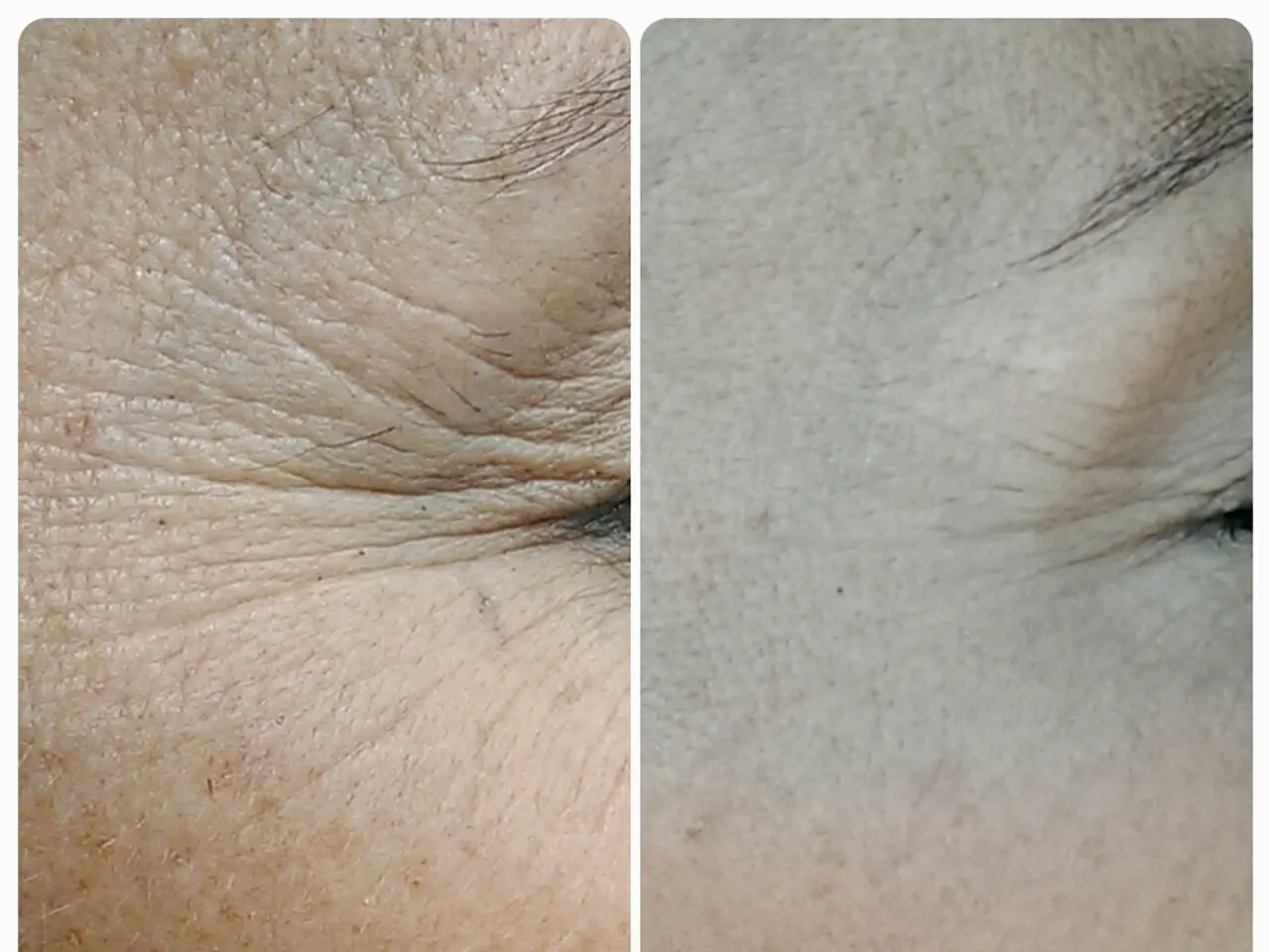Clash of Skin Conditions: Atopic Dermatitis versus Psoriasis
In the United States, approximately 7.5 million adults suffer from psoriasis, a chronic skin condition, while around 2-3% of the population is affected by atopic dermatitis, another chronic skin disorder. These conditions can cause a range of symptoms, from mild to severe, and require different treatment approaches.
Atopic dermatitis can manifest with symptoms such as scaling skin, sensitive skin, skin infections, thickened skin, extremely itchy skin, crusty patches of skin, deep lines in the palms, discolored, swollen skin, raw, oozing, or bleeding skin. In adults, flare-ups are most common on the neck, face, eyelids, hands, back of knees, and inside of elbows.
Psoriasis, on the other hand, can present with symptoms like nail pitting, very sore skin, pus-filled bumps, rough, crumbling nails, morning joint stiffness, tender or swollen joints, smooth, raw red patches, small reddish bumps on the skin, and discoloration of one or more nails. More severe types of psoriasis can cause nail lifting or swollen or tender joints.
Both conditions can be triggered by various factors. Atopic dermatitis can be triggered by stress, food allergies, asthma, hay fever, chemicals in certain soaps, body washes, shampoos, detergents, and perfumes, and climate extremities. Psoriasis can be triggered by stress, tobacco use, cold or dry weather, heavy alcohol drinking, infections, skin injuries, certain medications, and climate extremities.
Treatment options for both conditions depend on the type and severity. For psoriasis, treatment may include biologic medications, topical or oral retinoids, topical steroid creams, OTC corticosteroid creams, coal tar soaps or shampoos, phototherapy or light therapy, vitamin D creams, oral medications like antihistamines, cyclosporine, or apremilast. Treatment options for atopic dermatitis include UV light therapy, topical calcineurin inhibitors, oral antihistamines, OTC or prescription corticosteroid creams, antibacterial creams, Dupilumab, and a solid skin care regimen using emollients and gentle, soap-free cleansers.
It is important to note that both atopic dermatitis and psoriasis are chronic conditions with no cure, and flare-ups might require prescription medications or professional treatments like phototherapy. Research is ongoing to determine the exact causes of these conditions.
In Germany, specialized dermatology clinics and centers offer advanced treatments for patients with atopic dermatitis and psoriasis, including biologics and JAK inhibitors like Upadacitinib, tailored to individual patient needs for effective symptom management.
If symptoms such as open wounds, oozing sores, inflamed joints, scaling skin, or pus-filled bumps are affecting your life, it is crucial to seek the advice of a healthcare professional. These symptoms could indicate a serious condition like erythrodermic psoriasis, a severe form of psoriasis that can cause severe itching, painful skin, skin that flakes off in large pieces, lesions that cover large areas of the body, red, scaling skin that looks extremely burnt, fever, chills, rapid pulse, and muscle weakness.
In conclusion, while atopic dermatitis and psoriasis are chronic conditions with no cure, there are various treatment options available to manage symptoms and improve quality of life. It is essential to consult with a healthcare professional for accurate diagnosis and treatment.
Read also:
- Uncovered in a Danish cellar, a 130-year-old butter additive harbors bacteria dating back to the 1890s.
- Duties and Responsibilities of a Caregiver for Dementia Patients (A Simplified Handbook)
- Bisphosphonates and Osteoporosis: An Overview and Additional Information
- Bipolar depression's characteristics and symptoms explained





